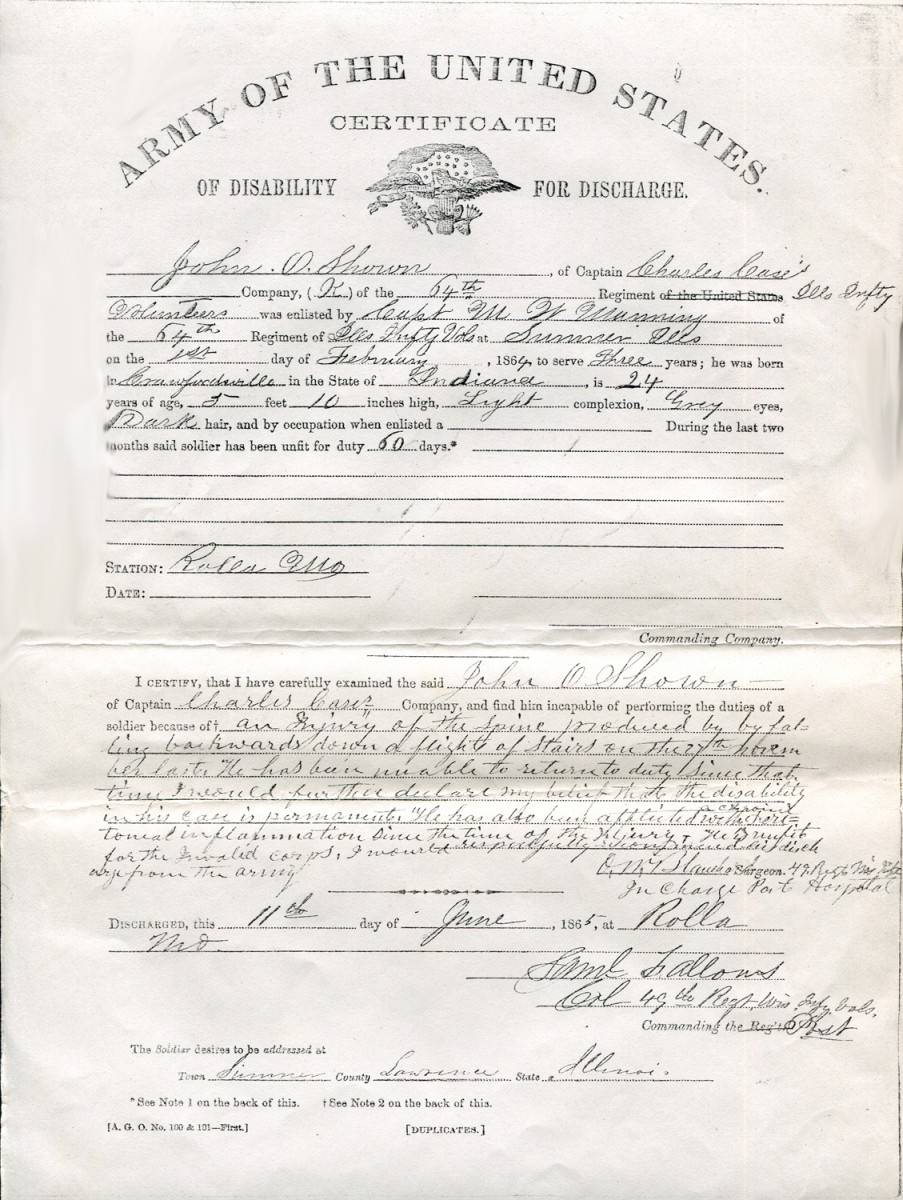2 June 2014
When citing military records, the "essential elements" of our citation will vary, depending upon whether we are citing a person-based or unit-based record. The basic distinctions are these:
Unit-Based: Muster Rolls, Pay Rolls, Etc.: For regular military units, these records typically are grouped by time frame and thereunder by arm of service. For volunteer units, they are commonly arranged by war (or time-frame) and state. Beyond that, they are filed numerically by regiment, then alphabetically or numerically by company or troop, and then chronologically. Our citation to any muster roll needs to include all these details. If it is necessary to cite a specific individual, the typical situation would have us mentioning the person in the "specific data" field of the citation.
Person-based: Military Service and Benefit Records: When citing person-based military records created by the states or the federal government, the emphasis is upon the person whose record constitutes a separate file or package. In such cases, our citation begins with the identity of the person by name (with rank, unit, and war added parenthentically), then the identification of the file number, collection, series, record group, and repository.
Please note: When you order a Compiled Military Service Record for an individual, you will notice that the individual documents (images of cards) carry headers such as "Pay Roll" or "Muster Roll." That header tells you the type of record that the card (a derivative) was extracted from. The presence of those card-headers do not mean that you are citing a pay roll or muster roll. To the contrary, you are only using only a card from the CMSR.
EE 11.32–11.40, pp. 595–606, provides further discussion and numerous examples for various types of military records.
Image Source, Soldier's Certificate of Disability for Discharge, 11 June 1865, in Adelaide Shown, widow's pension application certificate no. 497493, for service of John O. Shown (Sgt., Co. K, 64th Illinois Volunteer Infantry, Civil War); Case Files of Approved Pension Applications ..., 1861–1934; Civil War and Later Pension Files; Department of Veterans Affairs, Reocrd Group 15; National Archives, Washington, D.C.
Military Service Records
This is a very useful reminder. Especially since a seeker doing an initial dive into ordering records from NARA may not realize that NARA is not sending copies of the actual rosters, but copies of the CMSRs. In this respect the order forms are rather deceptive.
Military Service Records
You are so right, Jade, about the needs of researchers. All of us, at some point, were beginners in the use of military records and the use of NARA records. Until we have used a variety of them and have learned first-hand the difference between various types of documents, it is logical to take what we see at face value. When a military file consists of pieces of paper on which each carries a header such as "Pay Roll" or "Muster Roll,"many new researchers, doing academic as well as personal projects, do assume that those headers mean exactly what they say.
Military Records including deeds
This may be a little off topic, but it does have to do with military service & pension records.
In researching one ancestor's Rev. War era military pension records, the veteran had to prove that the sale of a tract of land to his nephew did not in any way add substantially to his estate. Here's the problem:
I had a certified copy photocopied from the deed book with the "3rd day of--" recorded, yet the copy in a different hand that was in the pension file recorded the transaction on the "30th day of--."
Since both are copies, how can we tell which one is more accurate?
OMPF Citation to the whole and constituent parts
I'm struggling to write the story of a particular ancestor for partially this reason. As career Army, his OMPF fills 3-2" binders. Efficiency reports, oaths, orders, correspondence, medical files, etc. on posts covering most of the US East of the Mississippi plus European and Asian theaters.
Understanding where all these constituent parts originated in order to craft citations is daunting to say the least. Right now I'm citing the OMPF as a whole with source notes to the individual page within but I know that won't pass muster when I want to move this out of my personal writing and into the public arena.
Any advice?
Rorey, you're exercising an
Rorey, you're exercising an abundance of caution, here, so let's turn the question around and ask it a different way: Why would citing a specific document in an OMP file differ from citing a specific document in a pension file? Or, say, any document in any other archival file that exists within a collection, that exists within a series and/or record group, at a particular repository? EE 11.40 "Pension Files," particularly p. 604, gives examples of citing either to the document or to the file.